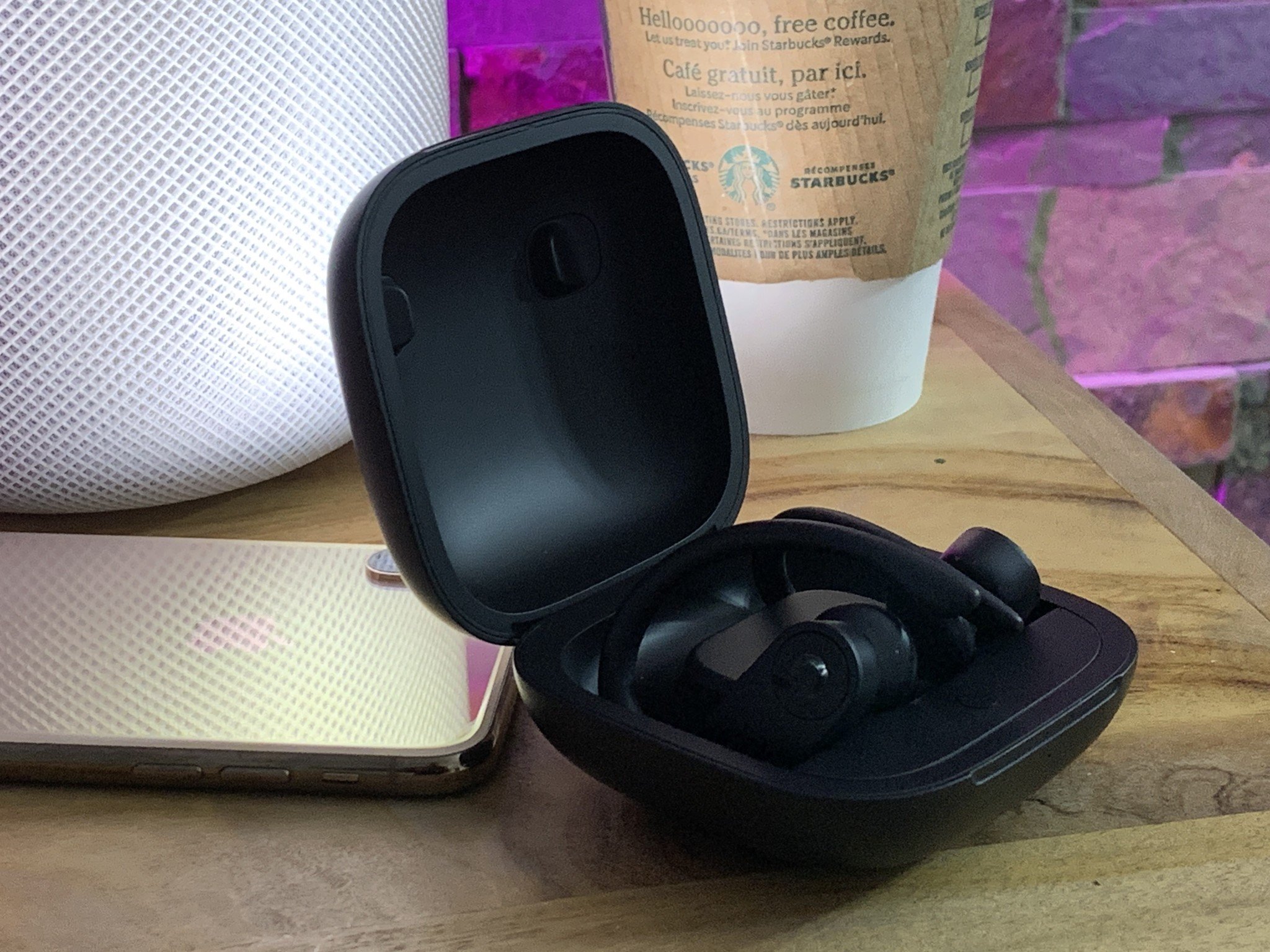I'm no audio expert. For that, check out my colleague, Lory Gil's Powerbeats Pro first impressions and her upcoming review. But I do listen to a lot of audio. Mainly podcasts, videos, audiobooks, and a little music.
For the last couple of years, I've lived on AirPods. I use them in the mornings when I go out for walks. I use them during the day for meetings, podcasts, and calls. I use them when I'm out to edit these videos. I use them when I travel. Yeah, even without noise canceling. They're light, they're wireless, they're long lasting, and they're incredibly convenient. I use them for almost everything… Almost.
Like I said before, I have Brazilian Jiu-Jitsu mangled ears, or maybe just asymmetrical ears, and the right one just doesn't stay in as well as the left. So, for anything where I want stereo but I need to do something super active, AirPods just can't hang.
But, just 48 hours later, I'm already thinking Powerbeats Pro can.
Rather watch than read? Hit play on the video above!
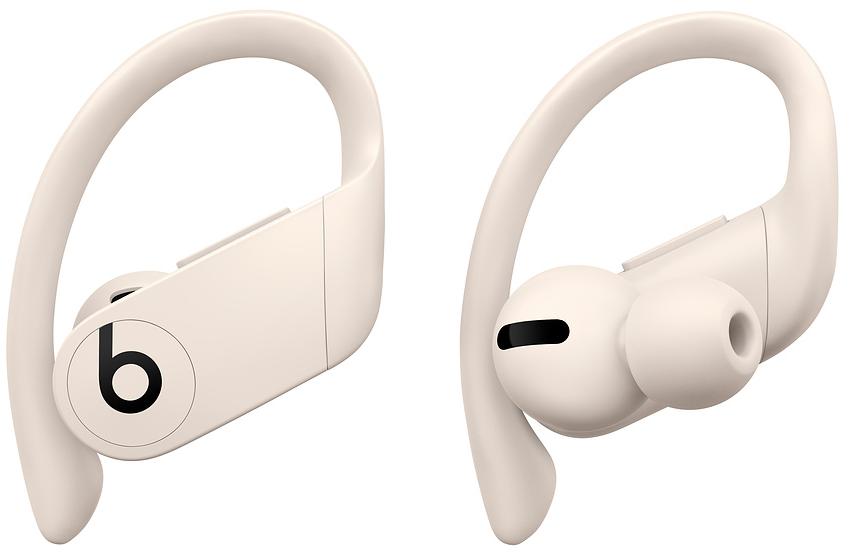
H1-powered truly wireless headphones for the truly active.
Take AirPods, add an around-the-ear loop, 4-different in-ear tip choices, IPX 4 sweat and splash resistance, color options — in black, ivory white, navy blue, and moss green — and noise isolation, and you have Powerbeats Pro, Apple's latest escalation in truly wireless headphones.
Powerbeats Pro Design
Apple bought Beats by Dre back in August of 2014 and, since then, has relaunched the streaming app as Apple Music. The headphones, though, they've kept as Beats.
On one hand, they're still Beats. More colorful, more expansive, and more booming with the base. On the other, they've been integrating new Apple technologies almost as fast as the Apple branded kit.
iMore offers spot-on advice and guidance from our team of experts, with decades of Apple device experience to lean on. Learn more with iMore!
I don't know if that means they're all up in Apple's giant, state-of-the-art acoustics facility in Cupertino, but I that's my best guess.
And not just because Beats is claiming these new Powerbeats Pro, successors to the Powerbeats3, have been completely re-engineered from the inside out with advanced acoustic engineering for an impressive dynamic range, separation across the frequency curve, 60% reduction in total harmonic distortion, and powerful sound performance with clean, deep bass response.
That's all thanks to a new, linear piston driver with rigid aluminum piston center, and a new acoustic housing with micro-laser barometric venting which all sounds like Tony Stark talking to Jarvis, Friday, whatever, about new Iron Man audio.
The design has been tweaked too, angled to better fit the ear, with an offset acoustic nozzle for a better seal, and a redesigned hook for what they call better stability and I call less flippidity floppidy when things are getting hectic.
I've been wearing them with glasses all day, glasses slipped under the Powerbeats Pro to be specific, and they feel… like I'm not even wearing them. No discomfort at all.
Combined with the 4 different eartip options — yes, options, from an Apple owned company — ouch, cheap shot — it lets you really customize the fit for maximum comfort and connection. And so far, so great.
I didn't change them from the default but my colleague, Lory Gil did, and instead of pain after an hour or so, like with EarPods and AIrPods, she's had nothing but comfort all day.
That fit also provides noise isolation. It's not active noise cancelling, with all the quality that provided and power it demands, by virtue of the fit, it just better shuts out more of the noise around you.
So far, so good in coffee shops. But I'll be taking them on planes and trains tomorrow, so I'll let you know how that works out.
Compared to the Powerbeats3, the Powerbeats Pro have been Pym Particled down to 23% less volume and 17% less weight. You can feel that instantly too, both in terms of how they fit around your ear but also how they weigh on it.
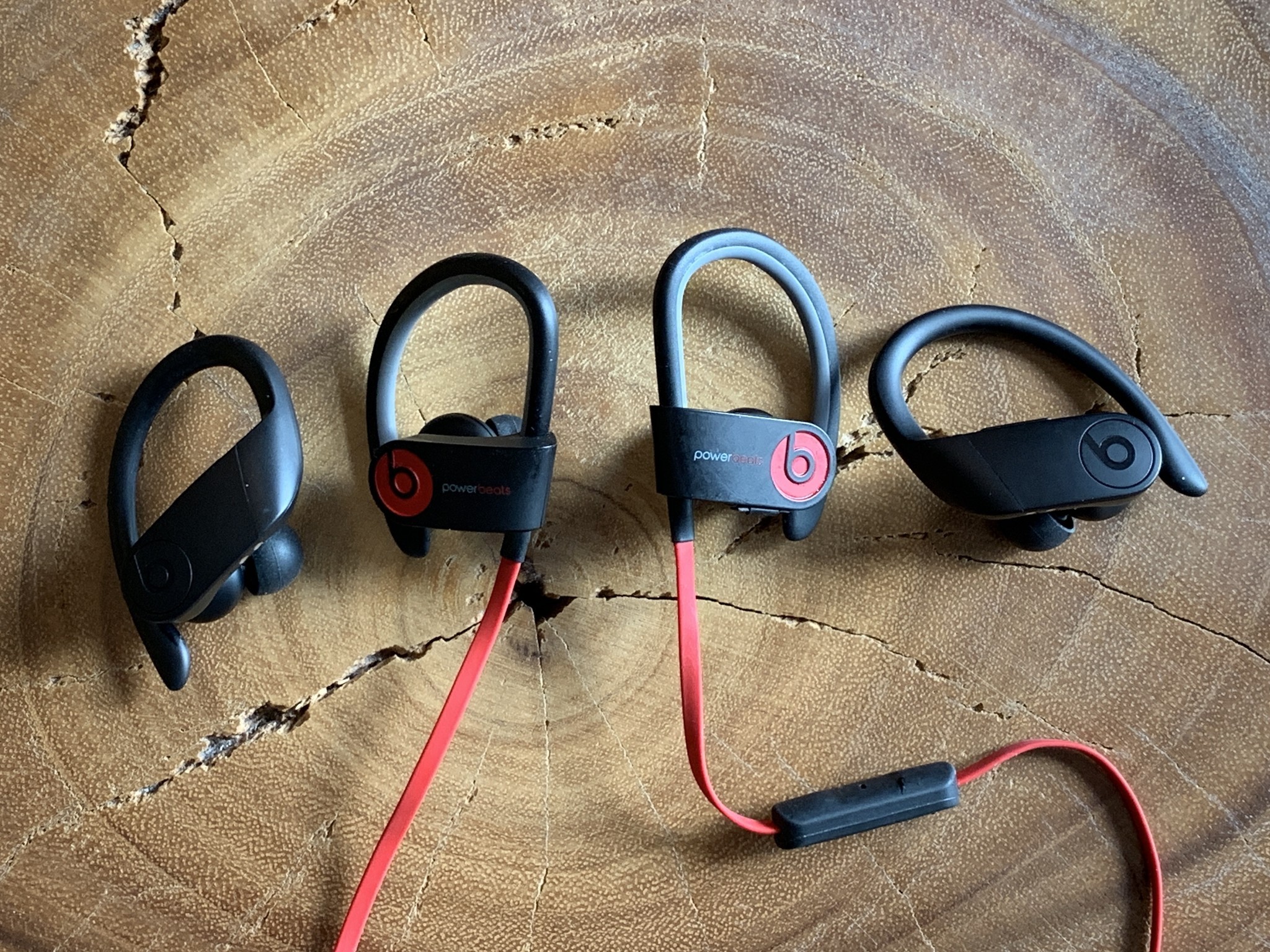
When you're dealing with something so small and light, any percentage less is a big percentage less.
Unlike AirPods, these new Powerbeats are also water and sweat resistant. The certification level is IPX4.
That means they're splash-resistant but, unlike modern iPhones, not submersion resistant and, unlike recent Apple Watches, certainly not swim-proof.
In other words, you can sweat in them and get some rain on them while you're out running in a hoodie, but don't drop them in the pool for any length of time and don't even think about swimming with them.
They come with and in a charging case, like AirPods, but like the buds themselves, that case is proportionately bigger. If I was into makeup, I'd say lipstick vs compact, and then promptly get yelled at by everyone actually into makeup.
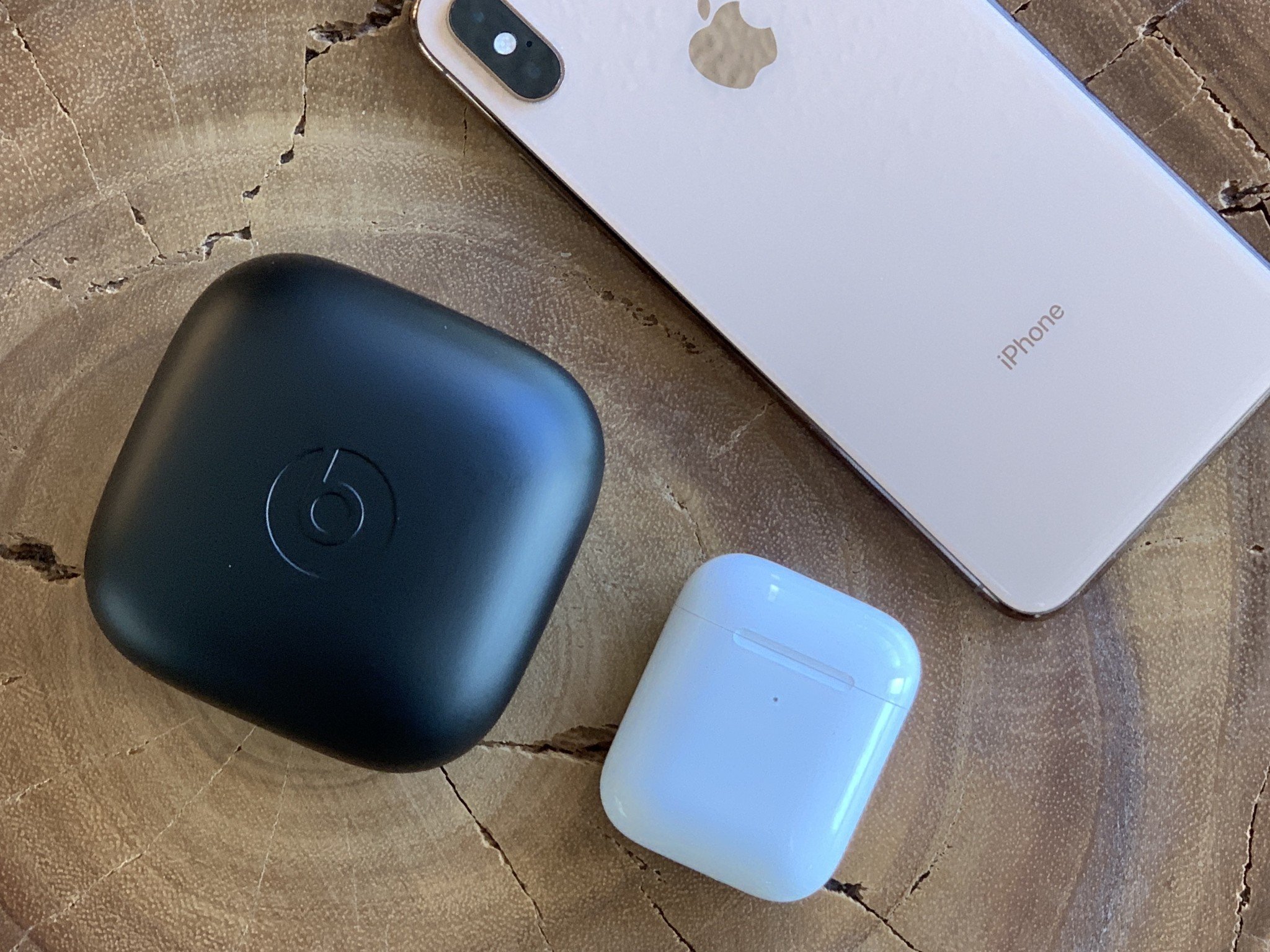
Chicken nugget vs. a junior burger? I'll spare you any more painful analogies and just say this:
I can still fit them into the pockets of my non-hipster, non-skinny jeans, but if you typically spray paint your pants on, you're going to need to throw them into your gear, gym, or go bag.
The Powerbeats case, though, unlike AirPods, is designed to sit and charge while open, so they may take up space, but they do it on display.
Powerbeats Pro Controls
I wanted to break controls out of design because they're actual, physical controls and I think that deserves some extra attention.
AirPods are super elegant, and that's great, but still, for many people, nothing beats the crunchy, clicky, tactile sensation of physical controls.
And Powerbeats Pro has them. On both pods. Identically. Ambi-controllingly.
You can press the big beats logo on the front to play or pause, answer or end calls, and even hold to activate Siri if you don't like voice activation. You can also double click to skip forward and triple click to skip back, double click and hold to fast forward and triple click and hold to rewind.
There's also a volume rocker on each bud. Yeah. On device volume. Each bud. Superb.
Powerbeats Pro Sound
I'm not an audiophile. Whatever the opposite of a golden ears is, I'm that. Fool's golden ears? They sound good to me so far. Fuller and richer than AirPods and not as bass-heavy as I expected.
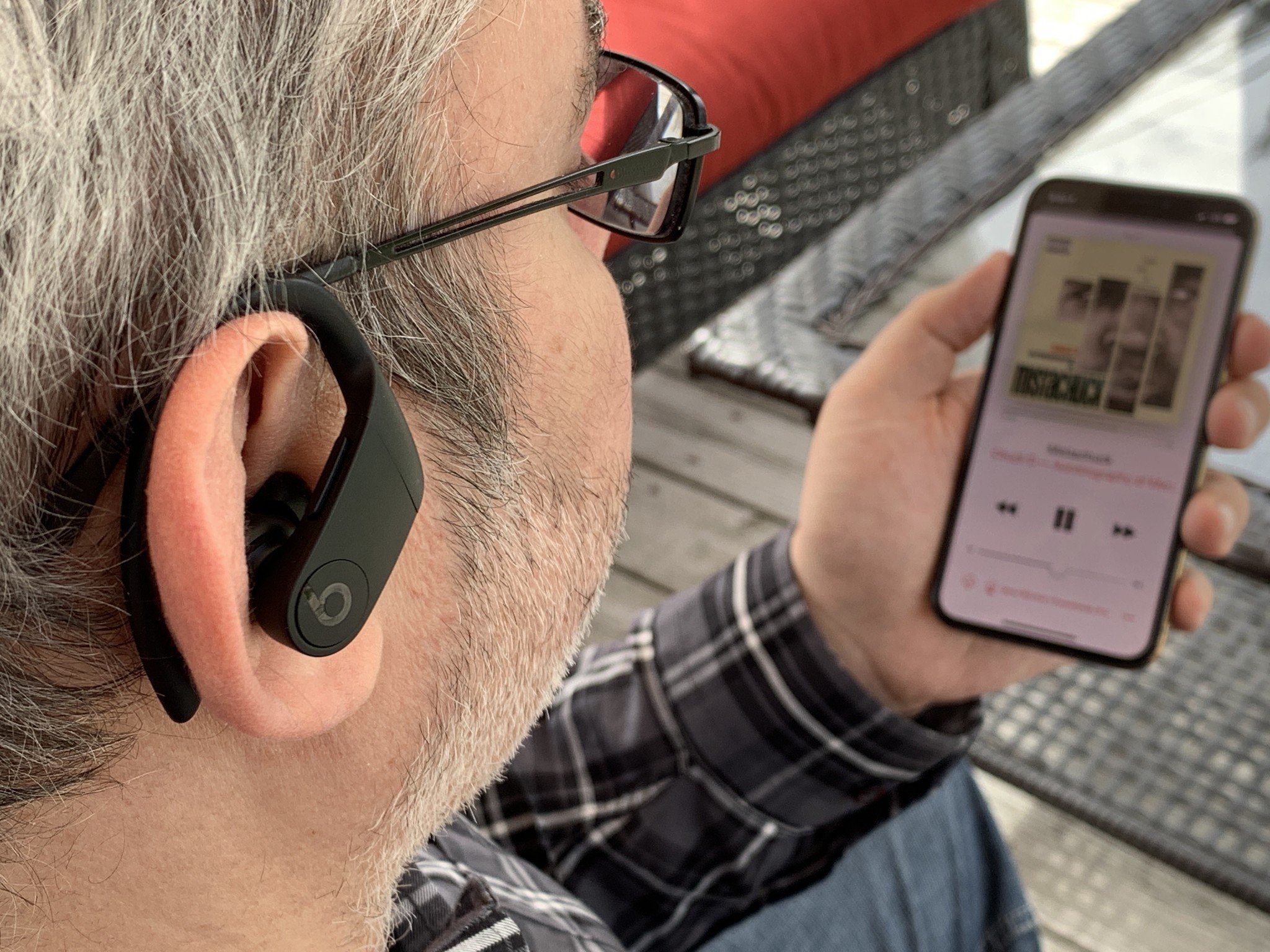
My colleague and noted rocker, Lory Gil, is going to be doing a full-on audio review, but here early thoughts are:
I was impressed with how clear the sound quality is on my iPhone. Listening to standard pop-rock tracks (They Might Be Giants, to be specific), it didn't seem bass heavy at all. I also noticed sounds that I never had before on songs I've listened to hundreds of time in my life. It reminds me of how I felt the first time I listened to music on the HomePod. No, I'm not comparing Powerbeats Pro to a HomePod, but I'm saying that I'm impressed with Powerbeats Pro's overall EQ balance.
I'll keep listening for the rest of the week and let you my thoughts as well.
Powerbeats Pro Power
Apple rates the Powerbeats Pro at up to 9 hours of listening and 6 hours of talk time per earbud and says you can fast charge them from 0 to 1.5 hours in just 5 minutes or 0 to 4.5 hours in just 15 minutes. Which is sweet. Full charge takes 90 minutes.
Pop them back in their case and you can recharge them almost two more times for a total of 24 hours.
As to how accurate those numbers are, and how much they vary in real-world usage, will take some time to test and figure out, so Lory will cover it in her full review.
The EarPods are fully independent so you can use them one at a time if you want to, and charge the case while using the pods, which takes 2 and a half hours, but also means, if you manage things right, the battery life is effectively unlimited.
I've been doing this with AirPods since they launched and it's one of my favorite things.
The case charges over Lightning, which is better than microUSB but not as cool as USB-C, which would be the new standard if everyone would just hurry up and support that standard. You know, before the consortium does something silly like announcing microUSB-C. Which would be pretty much Lightning if Apple made it an open standard. And.. I give up already.
That aside, this power situation is super smart and I'd go so far as to say almost perfect. It makes wireless and ultra mobile more than just manageable. It makes it almost transparent.
Powerbeats Pro Silicon
Yes, I am compelled to include a silicon section in any coverage I can, but it's especially cool here, so back up off me a minute and I'll explain.
The Powerbeats Pro have Apple's new, dedicated H1 headphone chip, one in each bud.
While the W1 turned into W2 and W3 and ran off with the Apple Watch, he H1 taking its place does less general wireless things and more things specific to what you want in wireless audio here.
Yes, they still make pairing ludicrously easy on iOS devices, including iPhone, iPad, Apple Watch, and even Apple TV, and even quick and clean on the Mac. And, thanks to iCloud, once you pair on your iPhone or iPad, the pairing is just propagated to every other device on your account.
They also make it faster to switch between devices. Like I said in my AirPods 2 review, what used to take me multiple clicks or taps and several long seconds now seldom if ever takes more than one.
Powerbeats, same deal.
H1 also enables on-pod Yo Siri. It's not really yo, it's hey, but I don't want to set off any of your devices, so I'm saying Yo Siri.
And, again, it doesn't sound like a big difference, whispering into your Powerbeats instead of shouting at your iPhone or whatever, but it really is.
It's near-field ambient computing and once you get into it, just working, walking, working out, living life, with an assistant always available, you wonder how you ever lived in the dark ages without.
H1 is also what lets each EarPods work with full independence. There's no primary pod that then relays to the secondary pod, which means you don't have to care which one you wear.
Both get optimized connections straight from the source, and both can control the source equally. They can't really fight over it, so you don't have to worry about the vying for dominance. They'll intelligently figure out which one should be listening at any given time, or last control click wins.
Optical sensors let the Powerbeats detect when they're in your ears, so they can take over audio, or when you pop them out so the audio can automatically pause.
There's also an accelerometer that detects when the pods are stationary and not in use, so they can go into deep sleep mode and save battery life.
That's all aces, but it's also all the same as AirPods.
What's cool, new, and different is a second accelerometer that detects your mouth moving, like when you're talking. Paired with a beam forming mic in each pod, it helps filter out noise so your calls sound crisp and clear.
Since Powerbeats don't have the elongated mic like AirPods, that's a really clever workaround. Especially considering the mic quality knocks on other, similar wireless headsets.
It sounds good in my preliminary tests but check back for Lory's complete review for more.
Powerbeats Pro and Android
For anyone using an Android phone, while you don't get all the easy pairing, propagation, and switching made possible by the tight Apple device and iCloud integration, you still get some benefits.
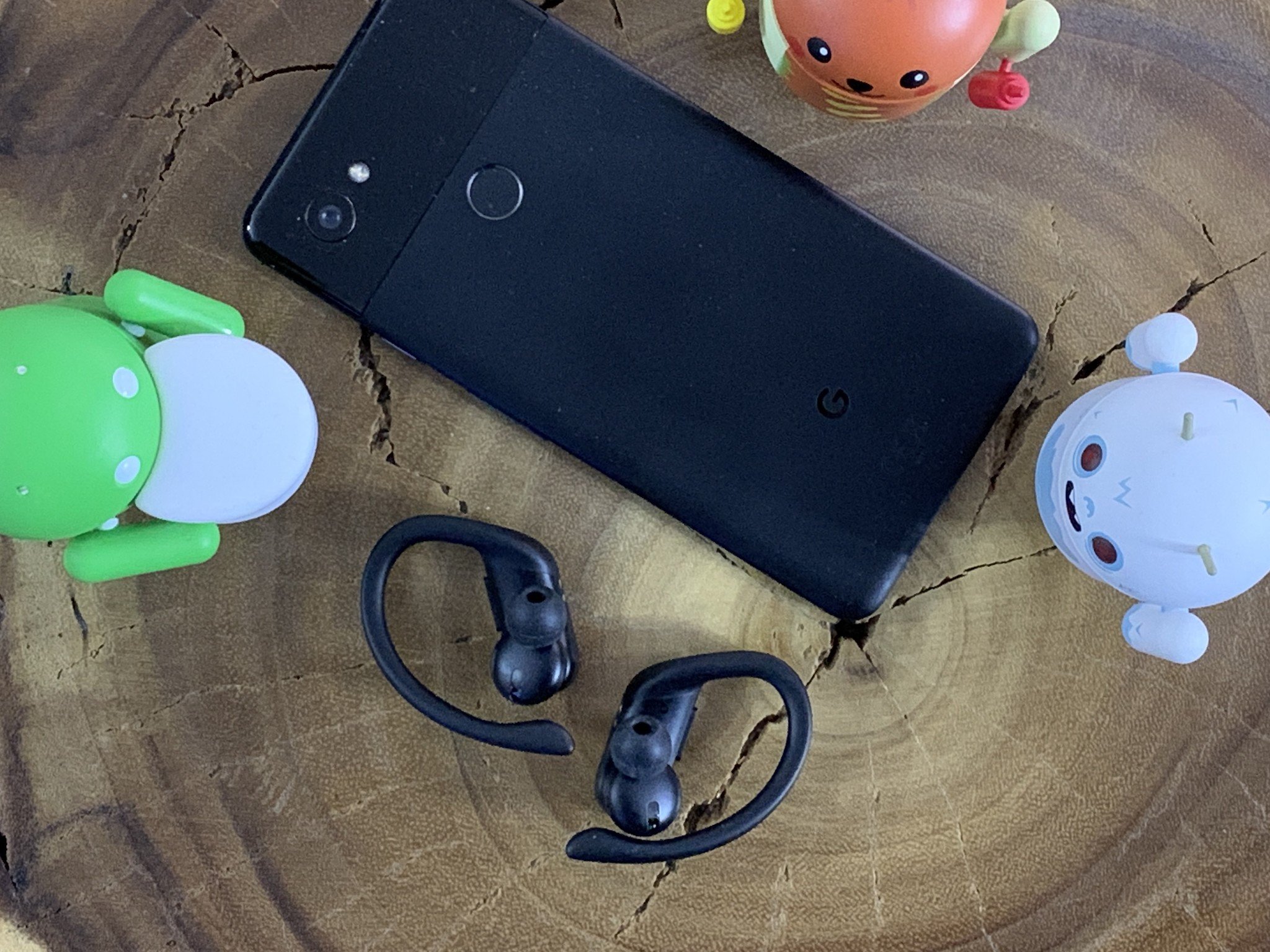
First, H1 still allows for fully independent use and control. So you can still use not just both Powerbeats at once, but either at any time. Just pick the bud, pop it in, and listen and control away.
Other than that, like AirPods, Powerbeats Pro is treated by Android just like any other Bluetooth 5.0 headset. Manually pair then rock on.
Powerbeats Pro Pricing and availability
Powerbeats Pro in black are available for order now and shipping this month. The other colors — yes, unlike AirPods, they also come in navy blue, moss green, and ivory white, though sadly not Product red, at least not yet — will be available later this summer.
They cost $250, which is $90 more than AirPods, or $50 more than AirPods with the inductive charging case.
That can cause some sticker shock, especially if you're used to making your purchase decisions strictly based on audio quality.
With Powerbeats Pro, though, like AirPods, what you're really paying for is the tiny tech squeezed inside. The H1 chip, the sensors, and everything else that lets them pair easily and power on quick and long.
If you just want audio quality, stick to wires. If you want truly wireless, next-generation convenience and, yeah, coolness, and you want more than what AirPods currently provide, then you want Powerbeats.

H1-powered truly wireless headphones for the truly active.
Take AirPods, add an around-the-ear loop, 4-different in-ear tip choices, IPX 4 sweat and splash resistance, color options — in black, ivory white, navy blue, and moss green — and noise isolation, and you have Powerbeats Pro, Apple's latest escalation in truly wireless headphones.

Rene Ritchie is one of the most respected Apple analysts in the business, reaching a combined audience of over 40 million readers a month. His YouTube channel, Vector, has over 90 thousand subscribers and 14 million views and his podcasts, including Debug, have been downloaded over 20 million times. He also regularly co-hosts MacBreak Weekly for the TWiT network and co-hosted CES Live! and Talk Mobile. Based in Montreal, Rene is a former director of product marketing, web developer, and graphic designer. He's authored several books and appeared on numerous television and radio segments to discuss Apple and the technology industry. When not working, he likes to cook, grapple, and spend time with his friends and family.
